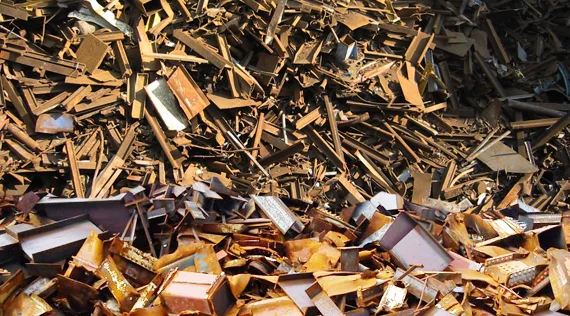Mitsubishi Backs Next-Gen Tech for Electronics Recycling
E-waste Recycling | 2025-06-19 13:00:37
The long‑term roadmap foresees replication of 5,000-tonne modules across multiple regions once finance and feedstock contracts are in place.
SEATTLE (Scrap Monster): While smartphones, laptops, and smart appliances have transformed modern life, their rapid turnover and complex construction have created a mounting environmental concern: electronic waste. Despite widespread awareness, most e-waste still ends up in landfills or incinerators, leaking hazardous materials into ecosystems and squandering valuable resources. The underlying issue isn’t just poor disposal habits; it’s that our devices are designed without end-of-life in mind.
So, what exactly is broken in the current e-waste system, and can innovation, from global corporations like Mitsubishi to frontline engineers, help us build a more sustainable future for electronics?
The Ongoing Challenge With E‑Waste
There is no doubt that e‑waste is a growing problem, and it's one we can't afford to ignore. From smartphones and laptops to TVs and smart toasters, nearly every modern device will eventually end up in a landfill or, if we're lucky, at a recycling facility. The trouble is that most of it isn't being handled properly, and even when it is, the system is flawed from the start.
The first major issue is simply a lack of care. Most consumers have no idea how or where to dispose of old electronics. A broken phone might get shoved in a drawer, tossed in the bin, or worse, sent to a landfill where heavy metals and toxic compounds slowly leach into soil and water. On the flip side, even well‑meaning folks who drop off e‑waste at collection points often don't realise that much of what they hand over is too hard to process efficiently.
Consumer Confusion and Disposal Gaps
Recyclers, for their part, are stuck between a rock and a silicon‑hard place. The design of modern electronics makes them incredibly difficult to dismantle. Batteries are glued in, chips are soldered down with lead‑free alloys, and components are packed into impossibly small spaces. These aren't just minor inconveniences; they're deliberate design choices made for manufacturing efficiency and product lifespan, not disassembly or reuse.
When it comes to actually recycling the internals, things get even messier. Extracting usable metals like gold, palladium, and rare earths isn't done with tweezers and a magnifying glass. It often involves highly caustic chemicals and energy‑intensive processes that can cause more environmental harm than good. So we end up in a strange loop: trying to solve a waste problem with processes that create even more pollution.
Worse still, it's barely profitable. The economics just don't add up. Precious metals are present but in trace amounts. Getting them out takes time, specialised equipment, and lots of money. It's often cheaper to mine fresh material than to recycle what's already been used, and that's a sad commentary on the state of things.
The Economics of Recovery and Reuse
Then there's the trend in electronics design to shrink and seal everything. Modern devices are practically hermetically sealed monoliths. There are no user‑serviceable parts. No sockets. No through‑hole components. That means even if a chip is still perfectly functional, it's not reusable. Once a board is damaged or outdated, the entire thing becomes waste.
In short, the e‑waste problem isn't just about tossing gadgets in the trash. It's about the entire lifecycle of electronics, from design and manufacturing to disposal and recycling. Until there's a shift in both consumer behaviour and industry design practices, we're stuck with a growing mountain of toxic, non‑profitable junk and a recycling system that's just not up to the job.
Mitsubishi Invests in Electronic‑Recycling Technology
Mitsubishi Corporation, the Japanese conglomerate, has acquired a stake in DEScycle Ltd, a UK‑based company that has developed a new solvent‑based method for recycling electronic waste. The partnership will see DEScycle draw on Mitsubishi's trading expertise and industry network to scale the technology worldwide.
Backed by one of the world's largest metals trading corporations, the collaboration intends to accelerate the adoption of clean technology in a space traditionally dominated by smelting and hydrometallurgy. Mitsubishi's involvement lends strategic credibility to DEScycle’s approach, with both companies aiming to establish a transparent, circular supply chain for critical resources like gold and copper, metals central to green tech and next-gen electronics.
DEScycle's process recovers metals such as copper and precious elements using a deep‑eutectic solvent (DES), a recyclable liquid salt that operates at room temperature and atmospheric pressure, slashing energy use compared with traditional high‑temperature smelting.
The underlying Deep Eutectic Solvent (DES) chemistry not only allows selective recovery of valuable metals but also aligns with emerging regulatory demands for traceable and low-impact recycling methods. DEScycle's room-temperature operation contributes to reduced emissions and operational energy costs, metrics becoming increasingly scrutinised as sustainability reporting becomes mainstream across global manufacturing sectors.
Pilot Plant (Wilton International, Teesside)
Construction start: late 2025
Commissioning: H1 2026
Annual capacity: 5,000 t of e‑waste
First Commercial Plant (UK)
Online: 2028
Nameplate capacity: 5,000 t / yr (expandable)
Follow‑on lines: North American site selection begins in 2026; Japanese feasibility studies in 2027‑28
The long‑term roadmap foresees replication of 5,000-tonne modules across multiple regions once finance and feedstock contracts are in place.
This modular replication model aligns with DEScycle’s long-term vision to disrupt e-waste processing economics. By replacing capital-intensive smelters with agile, solvent-based units, the strategy reduces barriers to entry in underserved geographies. Moreover, Mitsubishi’s strategic capital injection supports scaling the platform internationally, with early focus markets including North America and Japan, regions highlighted for feasibility studies beginning in 2026 and 2027, respectively.
With global e-waste volumes expected to exceed $120 billion in value by 2030, according to industry projections, scalable technologies like DEScycle’s are increasingly seen as essential to meet ethical sourcing goals. The partnership underscores a market shift where sustainability-driven engineering is not only desirable but commercially viable, particularly in the recovery of rare and precious metals critical to renewable energy, electrification, and digital infrastructure.
Courtesy: www.electropages.com
 By
By 